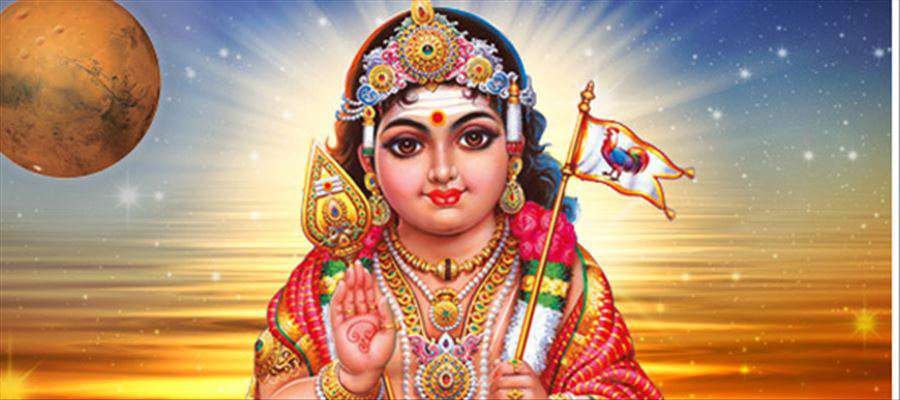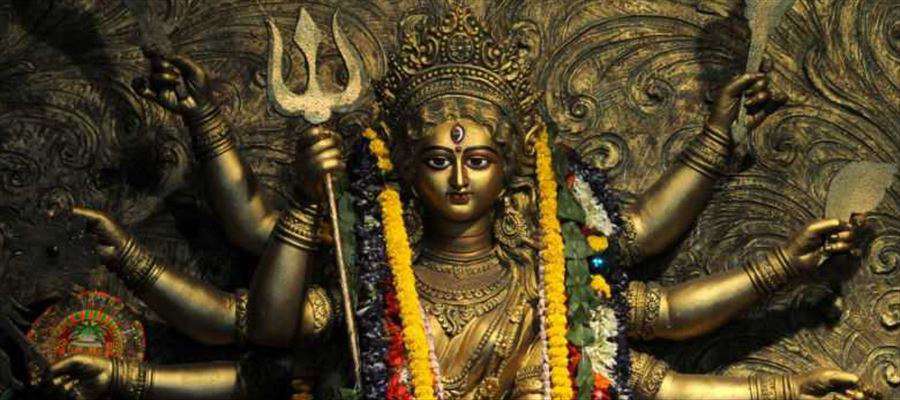
Lord Shiva – The Matchmaker God
In Hinduism, there's a fast to honor practically every deity. In northern India, Monday is Shiva's day, while on Tuesday; the Hanuman devotees keep a fast. In the South, the Tuesday fast honors Skanda, while Thursday is the fast day for Vishnu. In the intimate rituals...
read more
Follow these conch measures, wealth related issues will be solved!
Jyesth Adhik Maas month is currently going on and it will last till June 13. As per religious texts, Adhik Maas month is very dear to Lord Krishna. During this month, devotees worship Lord Shri Krishna to seek his blessings and fulfill wishes. There are some special...
read more
Facing wealth Issues? Do these measures on Friday, Goddess Lakshmi will pour blessings on you
Every god is important in life. Each day is associated with different god. On Friday, God Lakshmi is worshipped with full devotion. If a person offers prayer to Lakshmi on this day then all their wishes can be fulfilled. Maa Lakshmi holds several unique qualities and...
read more
Significance of Vaikasi Visakha Purnima
The second of the Tamil month,Vaikasi and the Star Visagam of Libra and Scorpio zodiac, the full moon day is called as Vaikasi Visagam(Sanskrit name Vaisakha)is celebrated with all fanfare. As per Puranas the three asura (demon)brothers, Soorapadman, Singamuhan and...
read more
Follow these measures this Purnima, your wealth issues will be solved
On 29 May, there will be full moon as the day marks Purnima of Adhik Maas month. Adhik Maas month comes once in 3 years. That is why, Purnima coming in this month has been considered very special. On this day, certain measures must be followed to overcome wealth...
read more
Worshiping God of Rain
Accordingly the five elements in Hinduism or Pancha Mahabhuta- bhūmi (earth), jala (water), agni (fire), vayu or pavan (air or wind) and vyom or shunya (space or zero) or akash (void) are worshiped as God. It was the Aryan race in the Vedic era, who started worshiping...
read more
What should you offer God Hanuman to seek his blessings?
Accordingly Lord Hanuman should be offered Jasmine oil with vermillion tunicle. In addition, he should be offered red sandalwood along with red clothes and red flowers. He should be offered jaggery along with roasted grams. He should also be offered delicacies made...
read more
Kaalsarpa Yoga: Types And Effects
Kaalsarpa yoga is a position in the birth chart of person, where all the planets come between Rahu and Ketu or Ketu and Rahu. Rahu and Ketu always move clockwise, whereas all the other planets move anticlockwise. So if the planets are moving away from Rahu then they...
read more
Mother Goddess Durga and her Symbolism
Accordingly Goddess Durga is the mother of the universe and believed to be the power behind the work of creation, preservation, and destruction of the world. Since time immemorial she has been worshiped as the supreme power of the Supreme Being and has been mentioned...
read more
Importance of Vat Savitri 2018, check what measures to do on this day?
Vat Amavasya comes during Jyeshta Masam Krishna Paksha. On this day, women's do fast and offer prayers to god for the long life of husband. Vat Savitri fast is very important in Hinduism. Women do this fast also for good fortune. All the married girls do worship by...
read moreHumans can read each other’s emotions from tiny changes in facial colour: Study
Humans can read each other’s emotions from surprisingly tiny changes in facial colour, according to a study.
Researchers at The Ohio State University in the US found that people are able to identify other people’s feelings up to 75 per cent of the time – based solely on subtle shifts in blood flow colour around the nose, eyebrows, cheeks or chin.
The study, published in the journal PNAS, demonstrates a never-before-documented connection between the central nervous system and emotional expression in the face.
It also enabled researchers to construct computer algorithms that correctly recognise human emotion via face colour up to 90 per cent of the time.
“We identified patterns of facial colouring that are unique to every emotion we studied,” said Aleix Martinez, a professor at The Ohio State University.
“We believe these colour patterns are due to subtle changes in blood flow or blood composition triggered by the central nervous system.
“Not only do we perceive these changes in facial colour, but we use them to correctly identify how other people are feeling, whether we do it consciously or not,” said Martinez.
The researchers hope they will enable future forms of artificial intelligence to recognise and emulate human emotions.
They first took hundreds of pictures of facial expressions and separated the images into different colour channels that correspond to how human eyes see colour – a red-green channel and a blue-yellow channel.
Using computer analysis, they found that emotions like “happy” or “sad” formed unique colour patterns.
Regardless of gender, ethnicity or overall skin tone, everybody displayed similar patterns when expressing the same emotion, the researchers said.
To test whether colours alone could convey emotions – without smiles or frowns to go along with them – they superimposed the different emotional colour patterns on pictures of faces with neutral expressions.
They showed the neutral faces to 20 study participants and asked them to guess how the person in the picture was feeling, choosing from a list of 18 emotions.
The emotions included basic ones like “happy” and “sad” as well as more complex ones such as “sadly angry” or “happily surprised,” researchers said.
Facial colour can broadcast our feelings: Study
Humans can read each other’s emotions from surprisingly tiny changes in facial colour, according to a study.
Researchers at The Ohio State University in the US found that people are able to identify other people’s feelings up to 75 percent of the time – based solely on subtle shifts in blood flow colour around the nose, eyebrows, cheeks or chin.
The study, published in the journal PNAS, demonstrates a never-before-documented connection between the central nervous system and emotional expression in the face.
It also enabled researchers to construct computer algorithms that correctly recognise human emotion via face colour up to 90 percent of the time.
“We identified patterns of facial colouring that are unique to every emotion we studied,” said Aleix Martinez, a professor at The Ohio State University.
“We believe these colour patterns are due to subtle changes in blood flow or blood composition triggered by the central nervous system.
“Not only do we perceive these changes in facial colour, but we use them to correctly identify how other people are feeling, whether we do it consciously or not,” said Martinez.
The researchers hope they will enable future forms of artificial intelligence to recognise and emulate human emotions.
They first took hundreds of pictures of facial expressions and separated the images into different colour channels that correspond to how human eyes see colour – a red-green channel and a blue-yellow channel.
Using computer analysis, they found that emotions like “happy” or “sad” formed unique colour patterns.
Regardless of gender, ethnicity or overall skin tone, everybody displayed similar patterns when expressing the same emotion, the researchers said.
To test whether colours alone could convey emotions – without smiles or frowns to go along with them – they superimposed the different emotional colour patterns on pictures of faces with neutral expressions.
They showed the neutral faces to 20 study participants and asked them to guess how the person in the picture was feeling, choosing from a list of 18 emotions.
The emotions included basic ones like “happy” and “sad” as well as more complex ones such as “sadly angry” or “happily surprised,” researchers said.
The real reason why GIFs are no longer available on Snapchat, Instagram
Snapchat and Instagram added Giphy integration only recently. Instagram introduced the feature in January while Snapchat followed the suit in February. One offensive GIF forced two major social networking platforms, Snapchat and Instagram, to remove Giphy integration from their respective platforms. The move seems to be temporary, but affects millions…








